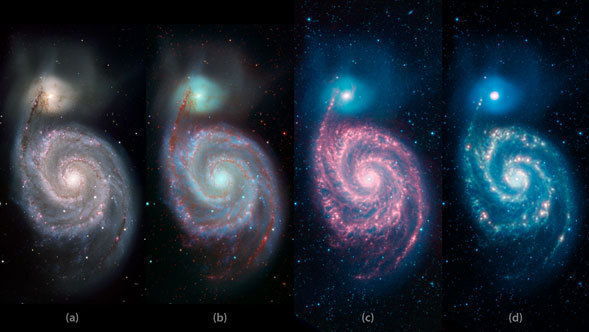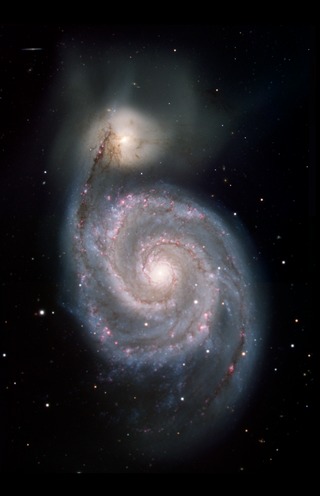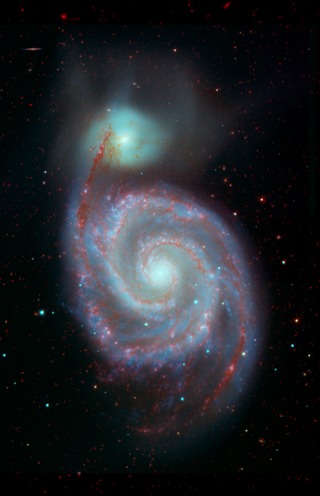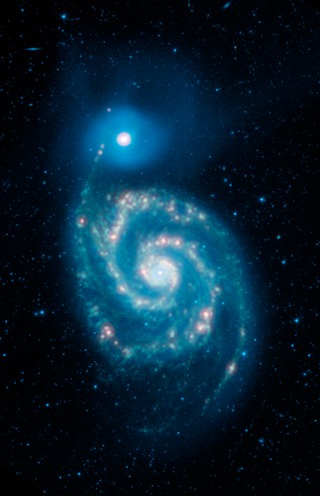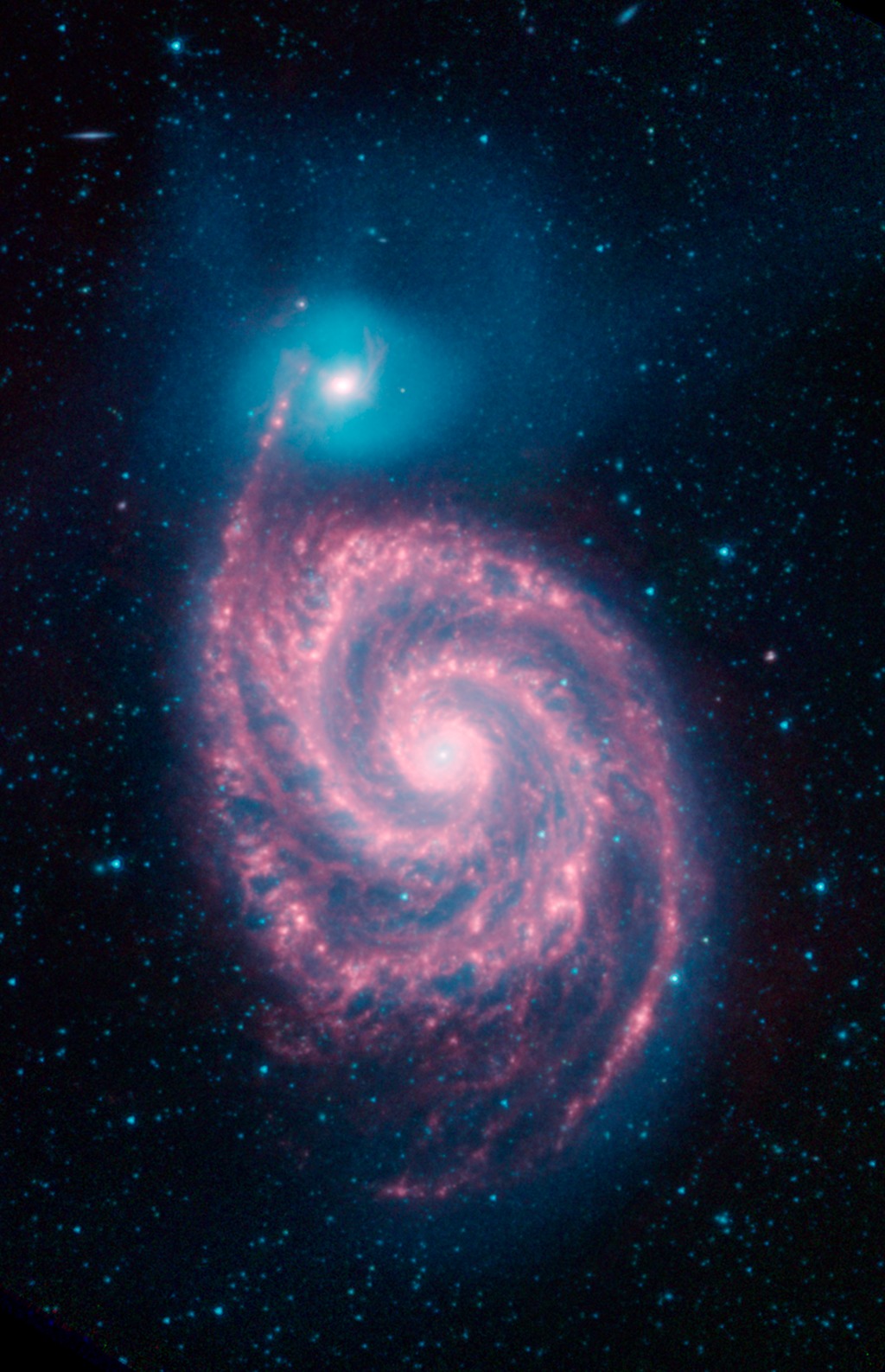
Credit: NASA/JPL-Caltech
Observation • June 26th, 2019 • ssc2019-11c
ssc2019-11c
This image shows the Whirlpool galaxy, also known as Messier 51 and NGC 5194/5195, which is actually a pair of galaxies. Located approximately 23 million light-years away, it resides in the constellation Canes Venatici.
Here we see three wavelengths of infrared light: 3.6 microns (shown in blue), 4.5 microns (green) and 8 microns (red), as observed by NASA's Spitzer Space Telescope. The blended light from the billions of stars in the Whirlpool is brightest at the shorter infrared wavelengths, and is seen here as a blue haze. The individual blue dots across the image are mostly nearby stars and a few distant galaxies. Red features (at 8 microns) show us dust composed mostly of carbon that is lit up by the stars in the galaxy.
All of the data shown here were released as part of the Spitzer Infrared Nearby Galaxies Survey (SINGS) project, captured during Spitzers cryogenic and warm missions.
The Jet Propulsion Laboratory in Pasadena, California, manages the Spitzer Space Telescope mission for NASA's Science Mission Directorate in Washington. Science operations are conducted at the Spitzer Science Center at Caltech in Pasadena. Space operations are based at Lockheed Martin Space Systems in Littleton, Colorado. Data are archived at the Infrared Science Archive housed at IPAC at Caltech. Caltech manages JPL for NASA.
About the Object
- Name
- Whirlpool Galaxy • Messier 51 • M51 • NGC 5194 • NGC 5195
- Type
- Galaxy > Type > Spiral
- Galaxy > Type > Interacting
- Galaxy > Grouping > Pair
- Distance
- 23,000,000 Light Years
- Redshift
- 0.002
Color Mapping
| Band | Wavelength | Telescope |
| Infrared | 3.6 µm | Spitzer IRAC |
| Infrared | 4.5 µm | Spitzer IRAC |
| Infrared | 8.0 µm | Spitzer IRAC |
Astrometrics
- Position (J2000)
- RA =13h 29m 53.0s
- Dec = 47° 12' 32.1"
- Field of View
- 10.2 x 15.9 arcminutes
- Orientation
- North is 0.4° right of vertical
